Why does Bolivian coffee produce so little? Bolivian coffee bean flavor story
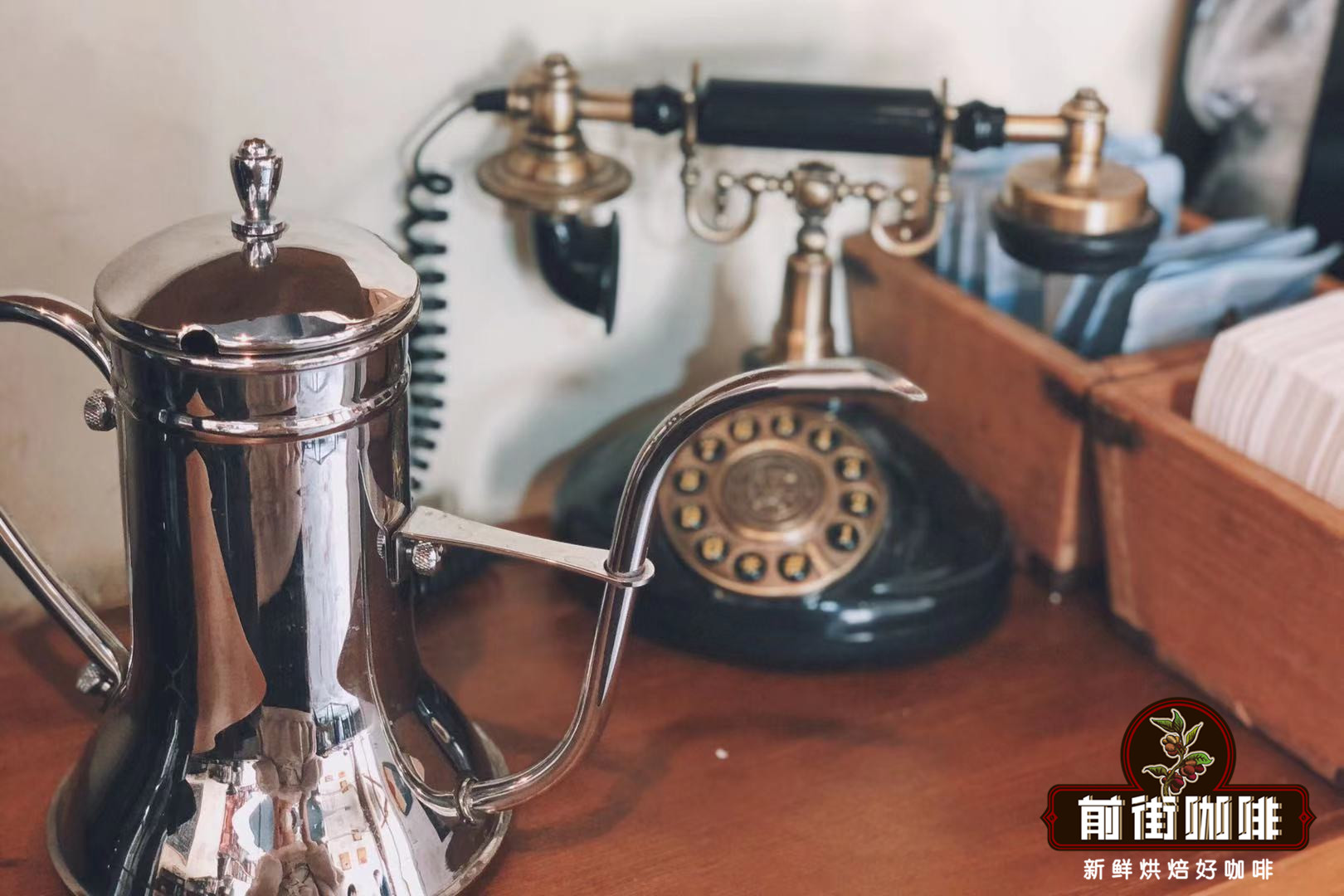
Professional coffee knowledge exchange More coffee bean information Please pay attention to coffee workshop (Weixin Official Accounts cafe_style)
South America is rich in coffee beans. In addition to the well-known Brazilian coffee and Colombia coffee, Qianjie Coffee today introduces another South American country that also produces good quality coffee beans-Bolivia. Bolivian coffee beans are grown at a lower altitude than Brazil, and Front Street Coffee believes that altitude has a significant impact on coffee flavor. Bolivian coffee aroma rich and unique, whether it is the aroma of beans after grinding or the aroma of the coffee made are quite obvious, similar to a mixture of floral and fruit aroma, impressive.
History of Bolivian Coffee
Bolivia is a landlocked country in South America, bordering Brazil and Colombia. La Paz, the capital of Bolivia, is the highest capital in the world at an altitude of more than 3,600 meters. Bolivia is indeed the poorest coffee-producing country in the world, even poorer than Ethiopia. Apart from the lack of ports, the high level of corruption in local government is also the reason why the country is poor.
Bolivian coffee can be traced back to 1880, when all production was basically related to the owners of some large farms north of La Paz. In 1991, the government promoted a plan to invest indigenous people in growing Bolivian coffee, but did not pay attention to quality.
For Bolivian coffee farmers, the main problem has always been their difficulty in earning enough money to sustain coffee cultivation. To supplement the coffee deficit, they have to grow other crops, mainly coca leaf, which can be used to make cocaine, and coca cultivation is legal in Bolivia. Encouraged by the government, coca leaves are four times more profitable than coffee and much easier to grow, causing many farmers to abandon coffee or even farms altogether.
Coca cultivation requires the use of large amounts of chemical pesticides and fertilizers, which are extremely damaging to the soil. In other words, after a few years of coca cultivation, the soil becomes too poor to grow any crops. In the early 2000s, the United States had strongly supported Bolivian agriculture, but coffee farmers suffered the most as relations with the United States deteriorated as the Bolivian government later supported coca cultivation. After Bolivia resumed a limited war on drugs, several programs were restarted to assist coffee farmers, such as COE (Cup of Excellence), which was held with the support of USAID.
As if those blows weren't enough, in 2013 leaf rust arrived, and Bolivia lost 50 percent of its coffee production that year alone. The combination of government coca leaf policies and leaf rust has reduced Bolivia's coffee production by 70 per cent over the past decade, reducing it to a small coffee-producing country.
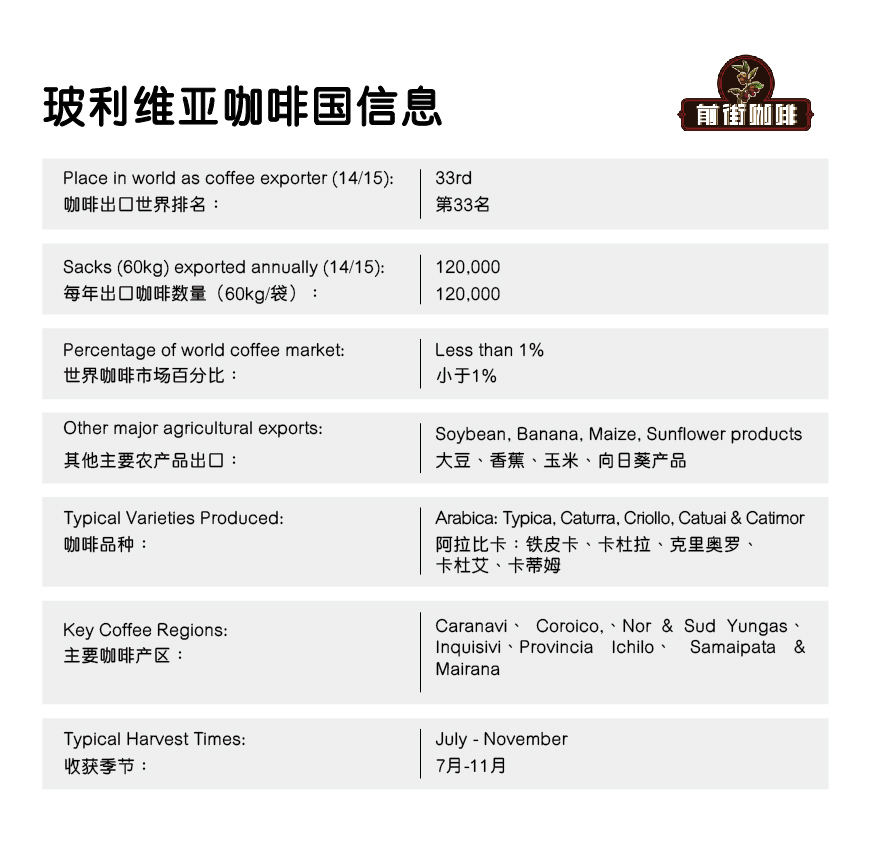
Bolivian coffee-producing regions
Bolivia's most famous production area is La Paz, which includes Caravani, Yungas and Inquisivi.
Yungas is located in the province of Caranavi, northeast of La Paz. 95% of Bolivia's coffee is produced here, a vast forest that runs along the eastern slopes of the Andes, a fertile land whose rainy, humid and warm climate makes it a favorable area for coffee production and cultivation. The elevation here is 800-1800 meters, and the area is most famous for one of the most dangerous roads in the world, nicknamed Yongas Road, also known as "the most dangerous road in the world."
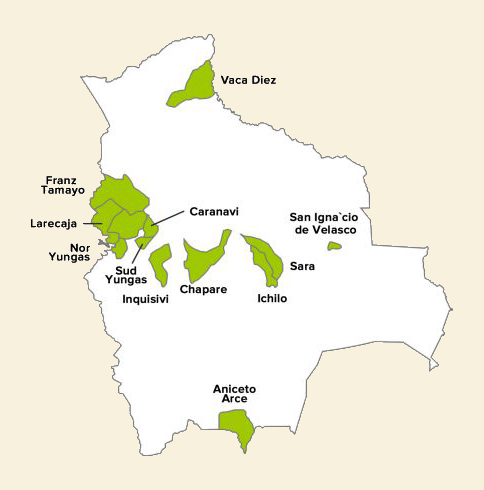
coffee planting
Bolivia's coffee production is dominated by smallholder production systems, with 23000 small farms ranging in size from 2 to 9 hectares. In particular, about 40% of Bolivia's coffee culture is mainly domestic. And Bolivia's cultivation is almost entirely organic.
planting varieties
Arabica is the main variety, such as iron pickup, kadura, kaduai and katim dominated. The growing season is from July to November.
Catimor
It's a Timor-Caturra hybrid. It was discovered in Portugal in 1959. The taste is obvious and easy to distinguish, bitter acid with a little astringency, and the aftertaste is often salty. High planting density and resistance to leaf rust make it a high-yielding variety, and in the past Latin America was heavily planted on the advice of agricultural experts.
treatment
Bolivian farmers treat raw beans primarily by washing, with occasional sun or honey treatments. It is worth mentioning that Bolivia has a colder climate than other coffee-producing countries, so many farmers use machine drying instead of sun drying.
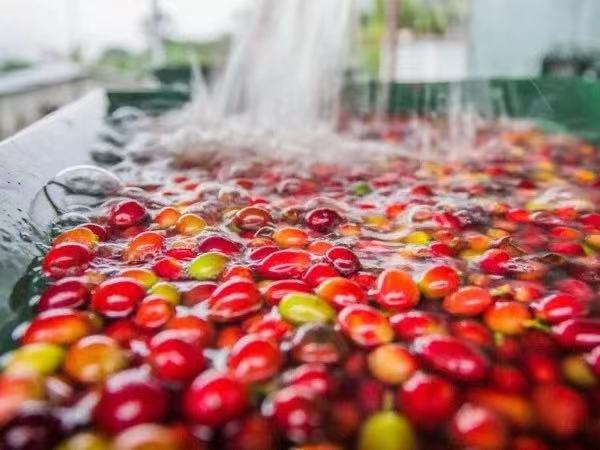
Tomorrow Sun Project
The Tomorrow Sun Project is a comprehensive plan to upgrade Bolivian coffee, which requires a lot of money and effort to educate small farmers, including technical support, breeding, pruning, harvesting and other important technologies, and to purchase coffee from small farmers at a high price, so that farmers 'income and quality enter a good cycle of sustainable management.
COE
In the 1990s and 2000s, foreign-aid-funded development projects built coffee washing plants and provided training programs for farmers on how to harvest and dry coffee correctly so that only good beans were selected, fermentation prevented and quality maintained. These trainings enabled coffee farmers at the time to participate in COE competitions, but only between 2004 and 2009.
After 2009, Bolivia's COE competition was cancelled because the Bolivian national government was very anti-American and did not want USAID to fund any more development projects in Bolivia, and there were no other sources of funding for COE projects.
Bolivia Valiki Estate Cocoa Sun Java
Coffee growing area: La Paz
Planting altitude: 1600 m
Type of coffee: Java
Processing method: cocoa sun treatment Coco natural
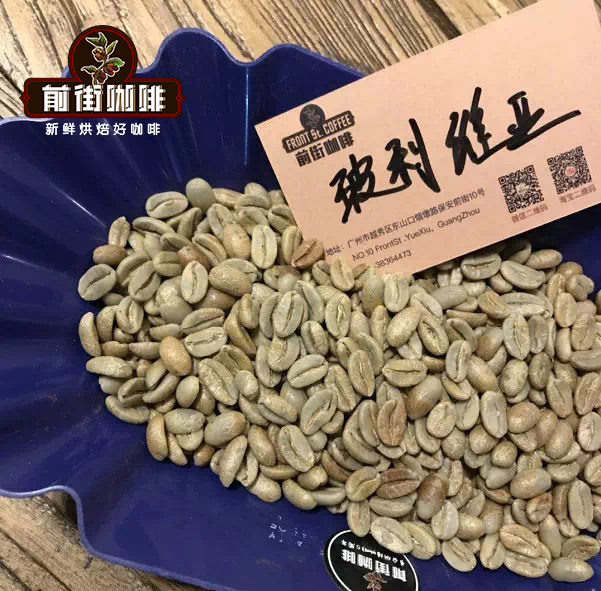
This Bolivian coffee bean comes from a small estate called Waliki. The name is inspired by a local greeting meaning "How is everything ?" The answer is " All Good" or "Hakuna Matata."
Valiki Estate is located in the Bolinda colony in a dense steep valley about 10 kilometers outside the town of Caranavi in La Paz, Bolivia.
The Bolinda colony was founded 52 years ago and was once known as 'Bolivia Linda' or 'Beautiful Bolivia'. Over the years, the name was shortened to Bolinda and is now one of the larger settlements in the area.
Valiki Estate is owned by the Rodriguez family. The Rodrigues family owns a family business called Agricafe, which produces coffee from its own estate and purchases high-quality small batches of crops from small producers in the Yungas region.
Valiki Estate covers an area of 3.62 hectares and is 1600 meters above sea level. This high altitude helps ensure slow ripening of coffee fruits. This slow ripening process leads to an increase in sugar concentration in the coffee fruit, which helps the coffee become sweeter.
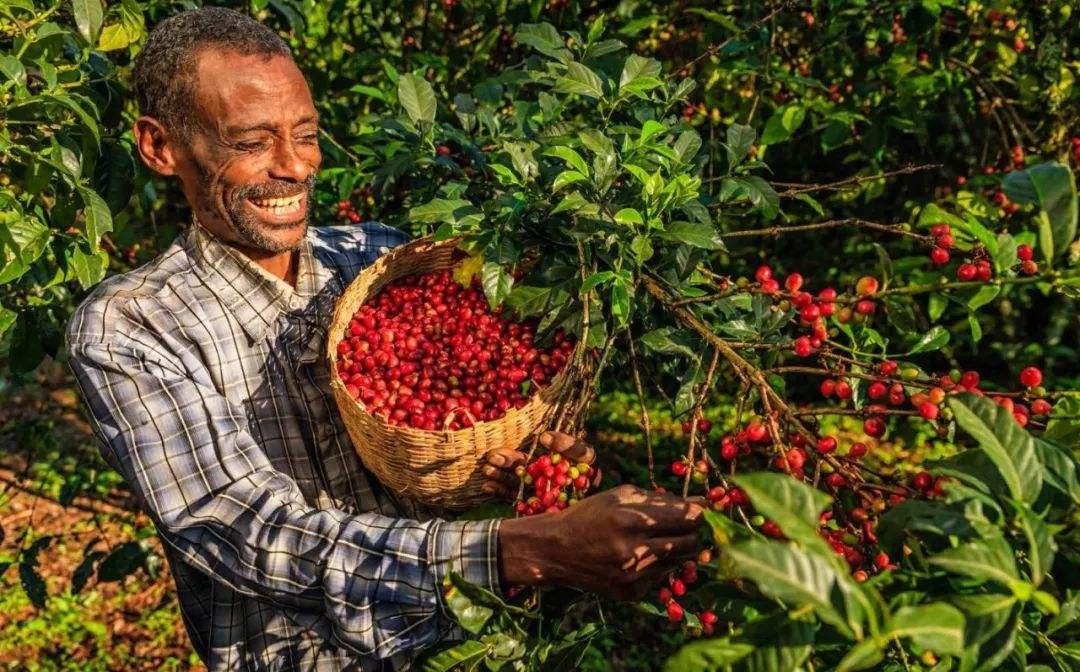
Valiki Manor
It is worth mentioning that Bolivia did not pay attention to coffee cultivation, resulting in a small amount, but Front Street Coffee specially selected this Java coffee bean from Waliki Estate, on the one hand, the particularity of coffee bean varieties, on the other hand, Front Street Coffee saw the professionalism and attention of the estate.
During harvest season, the estate hires pickers from the Bolinda community to carefully select the coffee fruit during the harvest. These pickers are trained to pick only ripe coffee fruits, and the harvest season will be divided to ensure that the coffee fruit is picked at the best maturity. The estate uses crates to ensure that the coffee is not damaged during transport and also to keep the coffee fruit ventilated, thus preventing unnecessary early fermentation. After sorting and weighing, the coffee fruits are carefully washed and dried on raised African drying beds, then turned over every hour. After about a week, the coffee fruit is placed in a cocoa dryer.
The Rodriguez family has been innovating and experimenting with different processing techniques and found that cocoa dryers can dry coffee beans slowly and continuously at low temperatures, thus reducing the impact of weather conditions. Coffee beans are kept in large steel drums for about 35 hours at temperatures not exceeding 40 degrees Celsius, turning every 30 minutes. After the beans are dried, they are transported to La Paz to rest and then dehulled at Agricafe's drying plant La Luna. In this factory, coffee is carefully shelled and sorted mechanically, in addition to manual sorting under ultraviolet light and natural light.
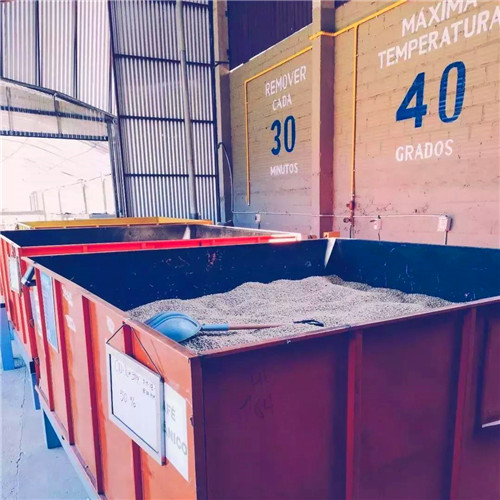
Java coffee beans
Java coffee beans are locally called long beans in Bolivia, named for their long appearance, and their official name should be Java. Java is a very interesting bean species, and its name shows that it has a strong association with Indonesia. Java was originally a coffee tree species that originated in the primeval forests of Ethiopia, collected by local peoples and then spread through Yemen to Indonesia, where it was named Java. Java was originally thought to be a variant of tibeka, but genetic alignment revealed that Java was actually a coffee variety from Ethiopia, Abyss inia.
After Indonesia, Java varieties first spread to the nearby Timor islands and then to Cameroon in East Africa, where they were first released for farmers in 1980. As for the spread to Central and South America, it was introduced to Costa Rica in 1991 through CIRAD (the Centre de Coopération Internationale en Recherche Agronomique pour le Développement) under the leadership of breeding expert Benoit Bertrand. The first Central American country to officially recognize the Javanese variety was Panama.
Java fruits and seeds are very long, shoots are brassy, plants are quite tall, but yield is low. It is more resistant to leaf rust and coffee fruit disease and is suitable for small farmers. Front street coffee through the cup test, found that this Java coffee beans due to outstanding flavor, not lose rose summer.
baking curve
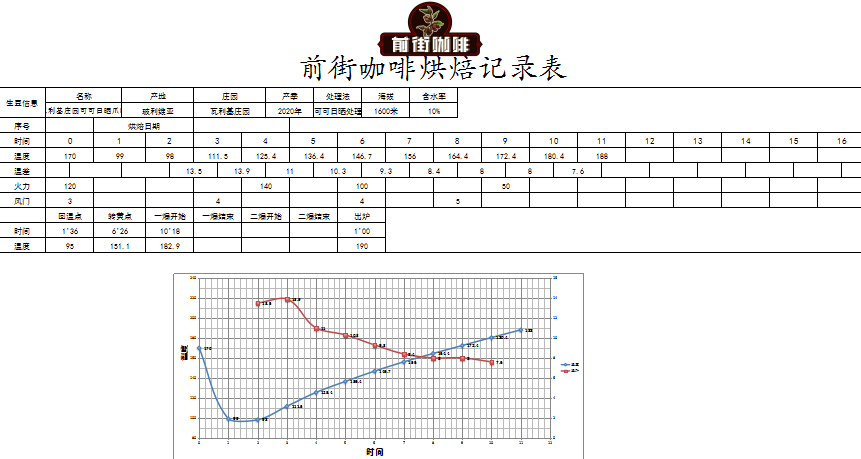
brew parameters
Coffee powder: 15 g
Proportion: 1/15
Water temperature: 90 degrees Celsius
Grinding degree: 0.85mm sieve pass rate 80%
Filter cup: Hario v60 #01 filter cup
brewing process
The first stage of water injection: 30 grams of water, stewing for 30 seconds
The second stage of water injection: inject 95 grams of water (electronic scale shows 125 grams), about 1 minute and 05 seconds to complete injection
The third stage of water injection: inject 100 grams of water (electronic scale shows 225 grams), about 1 minute and 45 seconds to complete injection
Extraction time: 2 min. Remove filter cup to complete brewing
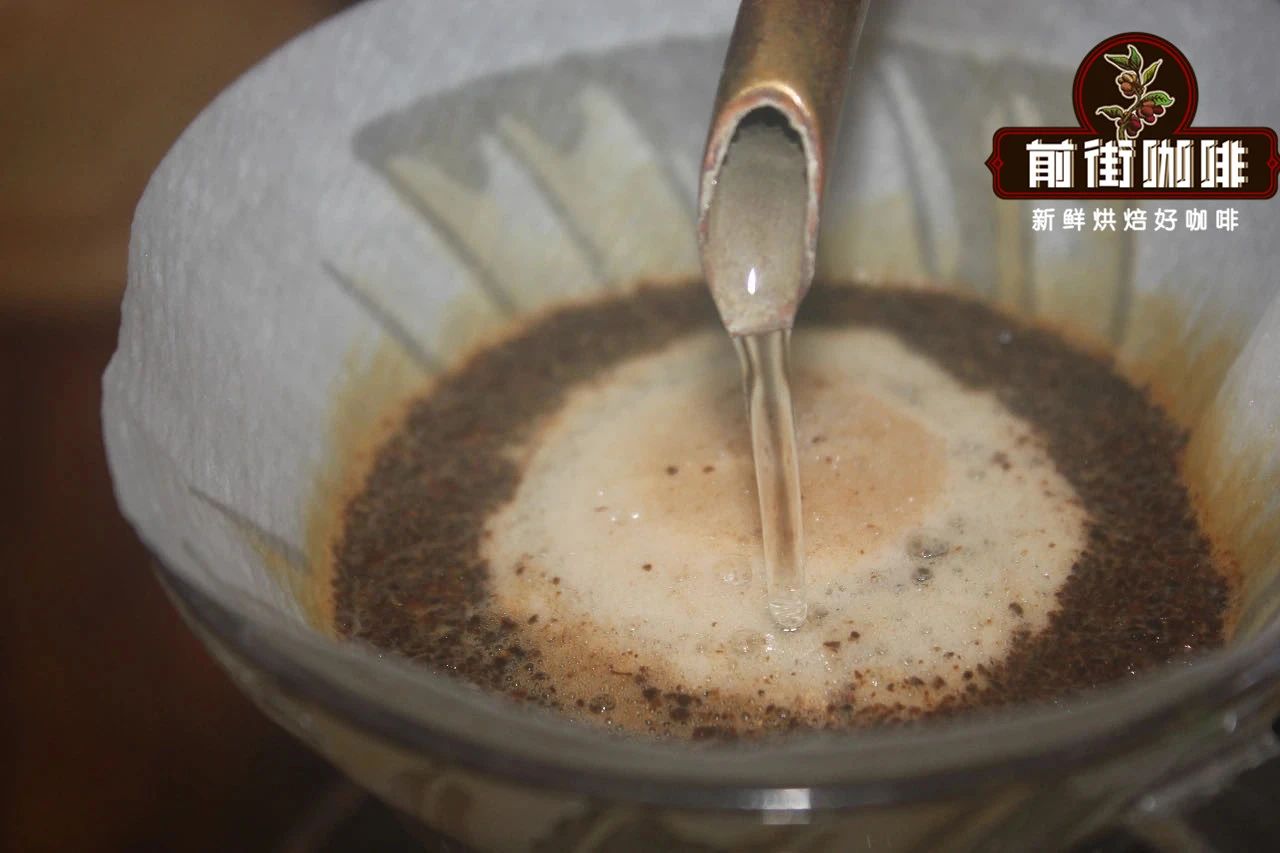
brewing flavor
Slightly fermented, grape, slightly nutty, floral, medium acidity, juicy taste
More fine coffee beans, please add private WeChat Qianjie Coffee, WeChat: kaixinguoguo0925
Important Notice :
前街咖啡 FrontStreet Coffee has moved to new addredd:
FrontStreet Coffee Address: 315,Donghua East Road,GuangZhou
Tel:020 38364473
- Prev
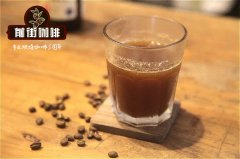
What is Irish coffee? The story of Irish coffee? How to make it in Ireland?
Professional coffee knowledge exchange more coffee bean information please follow the coffee workshop (Wechat official account cafe_style) the following is a folk story: Irish Coffee: the inventor of Irish Coffee is a bartender at Dublin Airport. Because transatlantic planes often refuel at this airport, passengers like to have a cup of Irish coffee when they get off the plane.
- Next
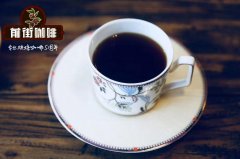
Panamanian Hartman Manor Red Wine Flavor description what are the characteristics of the taste production area?
Flavor description of red wine treatment at Hartmann Manor in Panama what are the characteristics of red wine treatment in taste producing areas? Lover's Manor is best known for winning the championship in the 2011 Best Panama Competition (BestofPanama). The cup test score was as high as 92.3 points, which not only beat the Jade Manor, which was the most indicative and won the championship for many years at that time, but also made a breakthrough in the gold standard.
Related
- Detailed explanation of Jadeite planting Land in Panamanian Jadeite Manor introduction to the grading system of Jadeite competitive bidding, Red bid, Green bid and Rose Summer
- Story of Coffee planting in Brenka region of Costa Rica Stonehenge Manor anaerobic heavy honey treatment of flavor mouth
- What's on the barrel of Blue Mountain Coffee beans?
- Can American coffee also pull flowers? How to use hot American style to pull out a good-looking pattern?
- Can you make a cold extract with coffee beans? What is the right proportion for cold-extracted coffee formula?
- Indonesian PWN Gold Mandrine Coffee Origin Features Flavor How to Chong? Mandolin coffee is American.
- A brief introduction to the flavor characteristics of Brazilian yellow bourbon coffee beans
- What is the effect of different water quality on the flavor of cold-extracted coffee? What kind of water is best for brewing coffee?
- Why do you think of Rose Summer whenever you mention Panamanian coffee?
- Introduction to the characteristics of authentic blue mountain coffee bean producing areas? What is the CIB Coffee Authority in Jamaica?

